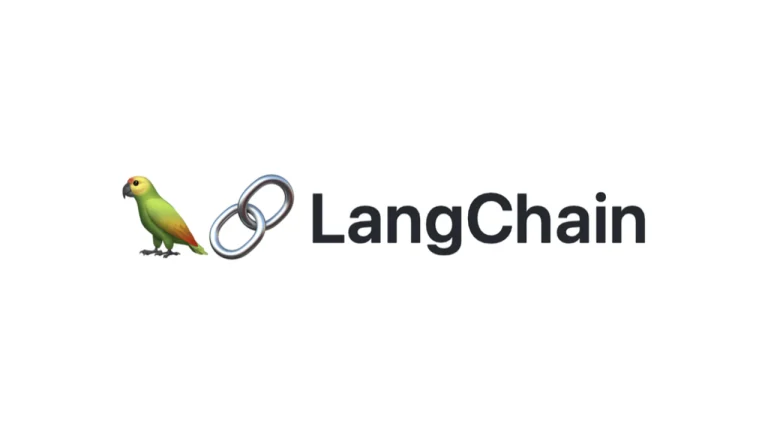Tessellate Imaging is an Indian based AI startup company helping businesses grow scalably with the power of Machine Learning, Computer Vision, Image Processing and Analysis, Deep Learning, and ML/DL DevOps. Key members – Adhesh Shrivastava(CEO), Akash Deep Singh(COO), Abhishek Kumar Annamraju(CTO). They have worked with all kinds of industries, from healthcare to retail companies such as AlemHealth, NetLink, GEO Graph, blooskai, Packt and many others. Apart from this, they have released some amazing open-source libraries on GitHub. Let’s have a look at these.
Monk is a low-code deep learning toolkit to leverage computer vision resources. It has plenty of use cases in computer vision-based problems such as image processing, image classification.
GitHub Repository – https://github.com/Tessellate-Imaging/monk_v1
Documentation – https://li8bot.github.io/monkai/#/home
Demonstrations – https://github.com/abhi-kumar/monk_cls_demos
Features:
- It is best suited for beginners (with a complete roadmap). Even developers and researchers can use it to build an end-to-end model for a specified use case quickly.
- Auto hyperparameter tuning with its hyperparameter analyzer.
- It can be integrated with any deep learning framework such as backend – Tensorflow, PyTorch, MXNet, etc. with a wide range of transfer learning models.
- It has separate modules that can be used in Google Colab (
pip install -U monk-colab), Kaggle notebooks (pip install -U monk-kaggle)and other data science competition platforms. - Allows project multiple project management and prototyping.
- Quick data loading, training, validation and deployment.
Installation
CPU (Non GPU) : pip install -U monk-cpu
All backend: pip install -U monk-cpu
Gluon backend: pip install -U monk-gluon-cpu
Pytorch backend: pip install -U monk-pytorch-cpu
Keras backend: pip install -U monk-keras-cpu
For a complete list visit: repository
Or
Clone the repository: git clone https://github.com/Tessellate-Imaging/monk_v1.git
Usage:
Create an image classifier
#Create an experiment
ptf.Prototype("project-1", "experiment-1")
#Load Data
ptf.Default(dataset_path="dataset/",
model_name="resnet50",
num_epochs=10)
# Train
ptf.Train()
Inference
predictions = ptf.Infer(img_name="image.png", return_raw=True);
Compare Experiments
#Create comparison project
ctf.Comparison("Comparison-1");
#Add all your experiments
ctf.Add_Experiment("project-1", "experiment-1");
ctf.Add_Experiment("project-2", "experiment-2");
# Generate statistics
ctf.Generate_Statistics();
Weather classification Demo:
Explore the different experiments from here.
Monk Object Detection library contains object detection using transfer learning, image segmentation and localization, activity recognition, pose estimation, OCR and some other use cases.
Features:
- Wide range of SOTA algorithms
- Easy installation and usage
- Build object detection pipelines
- Support for custom annotation formats – COCO, YOLO, PASCAL VOC, etc
- Easy deployment
Pothole detection: Source Code
To use the pretrained model use this 10 lines of code:
import os
import sys
sys.path.append("Monk_Object_Detection/3_mxrcnn/lib/") sys.path.append("Monk_Object_Detection/3_mxrcnn/lib/mx-rcnn")
from infer_base import *
class_file = set_class_list("pothole_trained/classes.txt");
set_model_params(model_name="vgg16", model_path="pothole_trained/model_vgg16-0050.params");
set_hyper_params(gpus="0", batch_size=1);
set_img_preproc_params(img_short_side=600, img_long_side=1000, mean=(123.68, 116.779, 103.939), std=(1.0, 1.0, 1.0));
initialize_rpn_params();
initialize_rcnn_params();
sym = set_network(); mod = load_model(sym);
set_output_params(vis_thresh=0.9, vis=True) output = Infer("pothole_trained/test/img1.jpg", mod);
pothole 0.9950724244117737 [109.65555071009518, 303.28242910581656, 441.5280866987249, 492.36453810607287] pothole 0.9883765578269958 [503.1345823081632, 246.1549497164476, 658.0930820964118, 353.84971546768463]

To train custom detector, dataset and annotation files need to be downloaded (Provided in the repository).
Training using mxrcnn:
import os
import sys
sys.path.append("Monk_Object_Detection/3_mxrcnn/lib/")
sys.path.append("Monk_Object_Detection/3_mxrcnn/lib/mx-rcnn")
from train_base import *
#dataset
root_dir = "./"; coco_dir = "potholes"; img_dir = "images"; set_dataset_params(root_dir=root_dir, coco_dir=coco_dir, imageset=img_dir);
#model type
set_model_params(model_name="vgg16");
#hyperparameter
set_hyper_params(gpus="0", lr=0.001, lr_decay_epoch="1", epochs=2, batch_size=1); set_output_params(log_interval=100, save_prefix="model_vgg16");
#preprocessing
set_img_preproc_params(img_short_side=600, img_long_side=1000, mean=(123.68, 116.779, 103.939), std=(1.0, 1.0, 1.0));
#initializing parameters
initialize_rpn_params(); initialize_rcnn_params();
# Invoke Dataloader
roidb = set_dataset();
INFO:root:computing cache ./cache/coco_images_roidb.pkl INFO:root:saving cache ./cache/coco_images_roidb.pkl INFO:root:coco_images num_images 665 INFO:root:filter roidb: 665 -> 665 INFO:root:coco_images append flipped images to roidb loading annotations into memory... Done (t=0.01s) creating index... index created!
#Network
sym = set_network();
# Train
train(sym, roidb);
INFO:root:max input shape
{'bbox_target': (1, 36, 62, 62),
'bbox_weight': (1, 36, 62, 62),
'data': (1, 3, 1000, 1000),
'gt_boxes': (1, 100, 5),
'im_info': (1, 3),
'label': (1, 1, 558, 62)}
INFO:root:max output shape
{'bbox_loss_reshape_output': (1, 128, 8),
'blockgrad0_output': (1, 128),
'cls_prob_reshape_output': (1, 128, 2),
'rpn_bbox_loss_output': (1, 36, 62, 62),
'rpn_cls_prob_output': (1, 2, 558, 62)}
INFO:root:locking params
['conv1_1_weight', 'conv1_1_bias', 'conv1_2_weight', 'conv1_2_bias', 'conv2_1_weight', 'conv2_1_bias', 'conv2_2_weight', 'conv2_2_bias', 'conv3_1_weight', 'conv3_1_bias', 'conv3_2_weight', 'conv3_2_bias', 'conv3_3_weight', 'conv3_3_bias', 'conv4_1_weight',
'conv4_1_bias', 'conv4_2_weight', 'conv4_2_bias', 'conv4_3_weight', 'conv4_3_bias']
INFO:root:lr 0.001000 lr_epoch_diff [1] lr_iters [1330]
INFO:root:Epoch[0] Batch [0-100] Speed: 4.71 samples/sec RPNAcc=0.926091 RPNLogLoss=0.251855 RPNL1Loss=0.887560 RCNNAcc=0.874691 RCNNLogLoss=0.319362 RCNNL1Loss=2.404060
INFO:root:Epoch[0] Batch [0-200] Speed: 4.23 samples/sec RPNAcc=0.934255 RPNLogLoss=0.218708 RPNL1Loss=0.808457 RCNNAcc=0.869170 RCNNLogLoss=0.320706 RCNNL1Loss=2.343518
INFO:root:Epoch[0] Batch [0-300] Speed: 4.43 samples/sec RPNAcc=0.936786 RPNLogLoss=0.207275 RPNL1Loss=0.819963 RCNNAcc=0.876739 RCNNLogLoss=0.296186 RCNNL1Loss=2.326637
INFO:root:Epoch[0] Batch [0-400] Speed: 4.51 samples/sec RPNAcc=0.938338 RPNLogLoss=0.195882 RPNL1Loss=0.786549 RCNNAcc=0.879988 RCNNLogLoss=0.286368 RCNNL1Loss=2.306008
INFO:root:Epoch[0] Batch [0-500] Speed: 4.41 samples/sec RPNAcc=0.940432 RPNLogLoss=0.184636 RPNL1Loss=0.763770 RCNNAcc=0.882797 RCNNLogLoss=0.277150 RCNNL1Loss=2.277596
#inference
from infer_base import *
class_file = set_class_list("./potholes/annotations/classes.txt");
#Model – Select the model as per number of iterations it has been trained for
set_model_params(model_name="vgg16", model_path="trained_model/model_vgg16-0002.params");
#Hyper Params
set_hyper_params(gpus="0", batch_size=1);
# Preprocessing
set_img_preproc_params(img_short_side=600, img_long_side=1000, mean=(123.68, 116.779, 103.939), std=(1.0, 1.0, 1.0));
#Initialization
initialize_rpn_params(); initialize_rcnn_params();
#Network
sym = set_network(); mod = load_model(sym);
#Load Image and infer
set_output_params(vis_thresh=0.9, vis=True)
output = Infer("potholes/test/img1.jpg", mod);
pothole 0.9788532853126526 [245.0558349609375, 219.602734375, 437.7943359375, 312.4978515625] pothole 0.8982967138290405 [532.2888671875, 268.3476318359375, 610.94091796875, 316.1823974609375] pothole 0.8982408046722412 [166.78828125, 163.675048828125, 226.873828125, 200.3756591796875] pothole 0.8538920283317566 [451.009326171875, 240.5260986328125, 521.778076171875, 298.5822998046875] ['pothole\n', 0.9788532853126526, [245.0558349609375, 219.602734375, 437.7943359375, 312.4978515625]]
Check out the other implemented applications: link
Monk GUI is a no-code GUI platform built on top of Monk and Monk object detection libraries to provide an interface for computer vision problems. It is built using the PyQt5 library.
Weed Classification Demo:
End Notes
Monk is an amazing library to build computer vision solutions. With just a few lines, one can develop models. The repository provided contains datasets and annotations(for object detection) and pre-trained models to get our work done quickly. In the upcoming releases, we can expect to get custom training interfaces and integration with more frameworks and models.



















































































